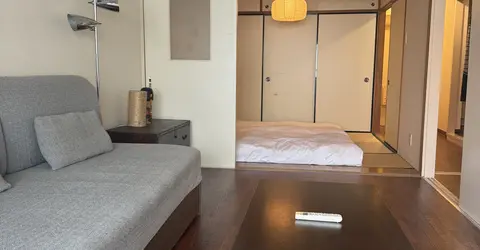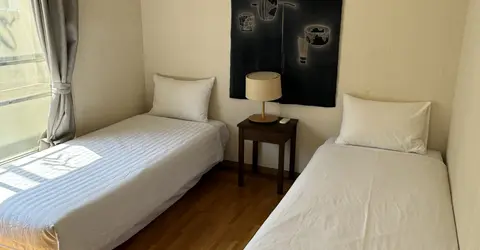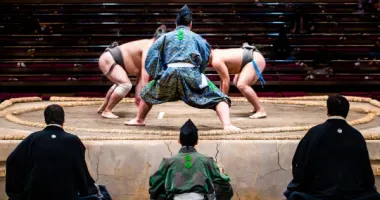Ryozen Museum of History
The Ryozen Museum of History in Kyoto highlights the events of the Bakumatsu period of Japanese history which saw the downfall of the Tokugawa shogunate in 1868.
Ryozen Museum of History 幕末維新ミュージアム 霊山歴史館
 Contemporary print of Commodore Perry (left) and one of his "foreign devil" sailors on the Black Ships
Contemporary print of Commodore Perry (left) and one of his "foreign devil" sailors on the Black Ships
The Ryozen Museum of History is located across the road from the Kyoto Ryozen Gokoku Shrine in the Gion district of Kyoto.
The Ryozen Museum of History is dedicated to the often violent events that brought to an end the Tokugawa regime at the climax of the Edo Period. This period of Japanese history is known as the Bakumatsu - or "the end of the Bakufu" and saw the downfall of the shogunate in 1868 after more than 250 years in power.
The catalyst for this upheaval, though not the direct cause for the fall of the Tokugawa, was the arrival of Commodore Perry's Black Ships at Shimoda in Tokyo Bay. Various armed factions gathered in Kyoto, the imperial capital, under the slogan of sonno joi (Revere The Emperor; Expel the Barbarians) hoping to force a return to imperial rule to counteract the threat from the encroaching Western powers, namely the USA, Britain, France and Russia.
The ensuing Meiji Restoration saw sovereign power "restored" to the emperor and Japan embark on a path of rapid modernization and industrialization under a reforming Meiji government.
 Ryozen Museum of History, Kyoto
Ryozen Museum of History, Kyoto
 Ryozen Museum of History, Kyoto
Ryozen Museum of History, Kyoto
Many of these bloody events leading up to the Meiji Ishin or Meiji Restoration were played out on the streets of Kyoto as bands of anti-Tokugawa royalists battled the pro-Tokugawa Shinsengumi special police.
Sakamoto Ryoma, an icon of the anti-Tokugawa factions was assassinated in Kyoto and the sword that supposedly killed him is on display at the museum. Other exhibits at the Ryozen Museum of History include weapons used in the Boshin War that settled the outcome between the two sides after the decisive Battle of Fushimi-Toba in south west Kyoto, wall panels, wood block prints, models and video reconstructions of the main events.
The Ryozen Museum of History also hosts regular temporary exhibitions related to the Meiji Restoration.
A lack of English explanations means that this interesting museum remains off the tourist trail, though the museum shop has a variety of sought-after goods such as Sakamoto Ryoma t-shirts and Shinsengumi-related items.

Blood stained banner of the Tenchugumi, sonno joi (Revere The Emperor; Expel the Barbarians) activists who staged a revolt against the Tokugawa in what is now Nara Prefecture in 1863. Their graves are in the cemetery of nearby Ryozen Gokoku Shrine
Access - getting to the Ryozen Museum of History
The museum is located at the top of Kodaiji Minami Monzen-dori.
Ryozen Museum of History
1 Ryozen-cho
Seikanji
Kyoto, 26 605-0861
Tel: 075 531 3773
Directions: Near Kodaiji Temple. From Kyoto Station, take bus 206 and get off at "Higashiyama Yasui Geko." From Keihan Shijo Station, take bus 207 to the same bus stop.
Other attractions within easy reach of this area of Kyoto are Kiyomizudera Temple, Kodaiji Temple and the Nene-no-Michi district.
 A Canon obusier de 12 shell from the Boshin War, Ryozen Museum of History, Kyoto
A Canon obusier de 12 shell from the Boshin War, Ryozen Museum of History, Kyoto
 Tombs of Sakamoto Ryoma & Nakaoka Shintaro at the nearby Kyoto Ryozen Gokoku Jinja
Tombs of Sakamoto Ryoma & Nakaoka Shintaro at the nearby Kyoto Ryozen Gokoku Jinja
The Museum of the Meiji Restoration in Kagoshima, Kyushu is another specialized museum dedicated to the events of the Meiji Ishin.





























